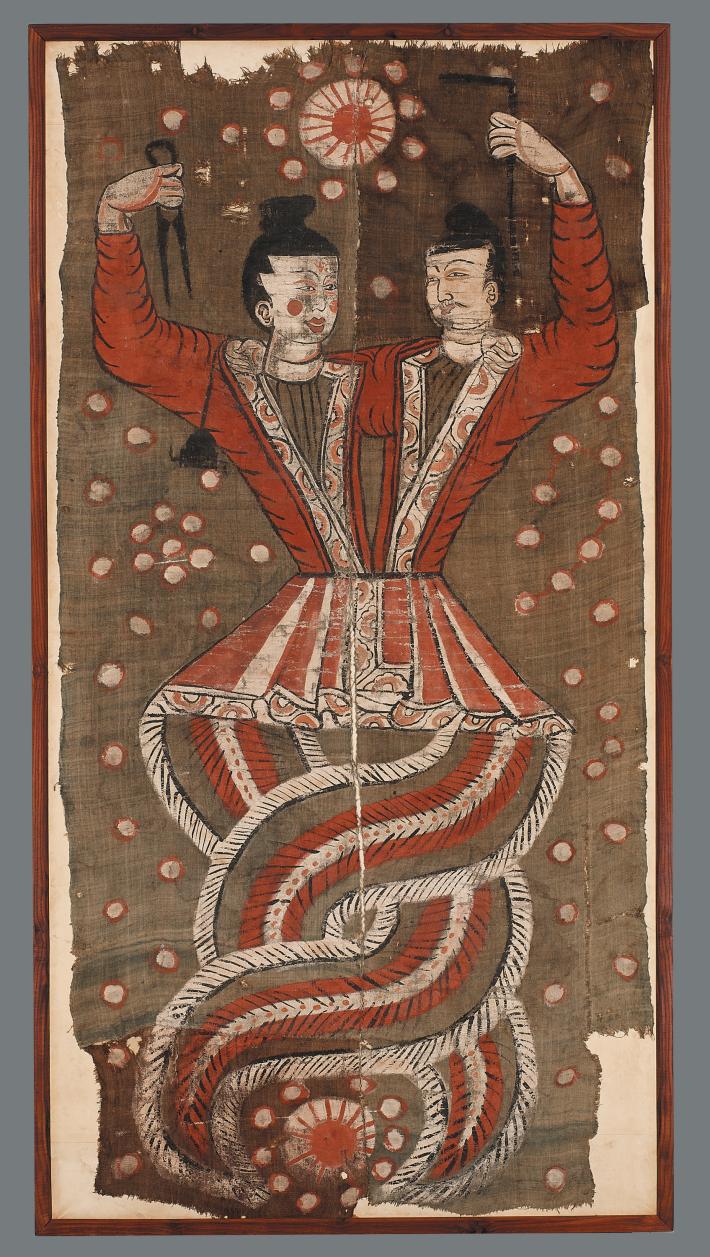Dispute over origin of Nüwa myths

This painting was discovered at the Astana Graves, Xinjiang Uyghur Autonomous Region. Fuxi and Nüwa are holding a compass and a ruler respectively.
Nüwa myths have spread widely in almost all the regions and among all ethnic groups in China. Identifying the points of origin of these myths has always been a key focus of scholars.
As early as the 1930s, Rui Yifu, Wen Yiduo and other scholars did field research among minority groups in South China. After recording their findings, they proposed that Nüwa myths originated in China’s south.
They found that many minority groups in the South believe in Nüwa and Fuxi, while the two gods’ images of human upper bodies and serpentine lower bodies derive from the minorities’ worship of serpents. They believed that historical record of Nüwa and Fuxi in Han nationality materials appeared later because the myths spread from minority groups in the south to the Han nationality in the north.
Other scholars disagree. They contend that Nüwa myths conform more to the lifestyles of people in the north. They claimed that the north is the point of origin of Nüwa myths.
In the 1970s and 1980s, the national census of folk culture began. The results combined with new archaeological materials supported their claim.
Zhang Zhenli from Henan University led a research team to investigate the mythology in the Central Plain at the beginning of the 1980s. They published a four-volume book to record their detailed findings, which demonstrates the close relationship between Nüwa myths and the Central Plain areas.
This is important evidence that Nüwa myths originate from the north.
In recent years, more achievements have been made in this area. Comparative research on myths in the Central Plains and myths in Southern minority groups combined with archaeological materials will further shed light on the origin of Nüwa myths.
